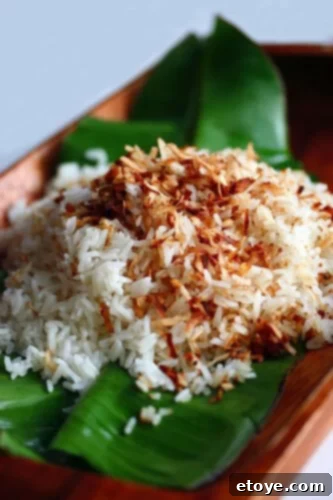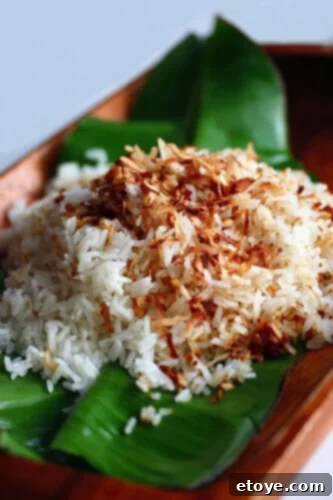
Imagine this: the phone rings, and it’s a representative from a prestigious local newspaper. They’re doing a feature on local chefs and want to include *you*. The request? Create a signature dish, write a detailed recipe, and be ready for their team to shadow you – from grocery shopping to the final plating – all by tomorrow. The excitement is immediate, almost overwhelming. Me? Truly? Of course, I enthusiastically agreed.
My mind immediately raced through countless culinary possibilities. What could I prepare that would be both impressive and approachable, showcasing fresh, vibrant flavors without being overly complicated? The goal was to let the ingredients speak for themselves. I quickly settled on a dish that seemed perfectly balanced: Seared Sea Scallops with a refreshing Mango Melon Salsa, accompanied by a side of fragrant Coconut Jasmine Rice. It felt elegant yet simple, highlighting seasonal produce and delicate seafood. “No problem at all,” I thought, “I can whip up this meal in about 30 minutes. It’ll be a piece of cake.”
However, there was one tiny, yet crucial, detail I had overlooked – a detail that would soon unravel my confidence and lead to a rather memorable culinary mishap. I had become utterly dependent on my trusty rice cooker. For years, preparing perfect jasmine rice was as simple as adding rice and water, then pressing a single button. The precise water measurements, the exact timing, the flawless technique – it was all automated. I’d never ventured beyond the ‘one-finger-push-button’ method of that magical appliance. The thought of making jasmine rice in a pot on the stovetop filled me with an unexpected dread. The measurements, the heat control, the steam management… it was an entirely different ballgame, one I hadn’t played in a very long time.
I know, it sounds ridiculous, perhaps even shameful for someone who loves to cook. Call me spoiled, sheltered, or even a little stupid when it came to basic rice preparation without my beloved gadget. The truth is, that day, under the watchful eye of the esteemed food critic, Brian Ries, I faced my culinary reckoning. I undercooked the rice. Terribly. I distinctly remember watching him chew, chew, chew, then gulp, followed by a subtle cough. He was incredibly brave and polite, but I’m almost certain I saw him discreetly pop a couple of antacids when he thought I wasn’t looking. He scribbled notes on his small notepad, and in my mind, I could almost read the words: “Note to self: let’s not call her again.”
The internal monologue was merciless. How could I, a Chinese cook, of all people, mess up RICE? It felt utterly sacrilegious, a betrayal of my culinary heritage. I imagined my ancestors shaking their heads, whispering in unison, “Ahhhh….Jaden-grasshoppa….Confucius, Buddha, and even Jackie Chan are very much upset. We meditate and pray for your awakening.” The pressure to produce perfect rice is ingrained in my cultural identity, and that day, I had spectacularly failed. The sting of embarrassment was palpable.
Thankfully, the seared scallops were perfectly cooked, tender and succulent, and the vibrant mango melon salsa was a refreshing counterpoint, receiving well-deserved praise. This minor success offered a sliver of solace. I’ll share photos of the entire dish next week when the newspaper article is published. But make no mistake, as soon as the critic departed, I rushed home, determined to redeem myself. I pulled out a heavy-bottomed pot and, with renewed focus, successfully cooked the jasmine rice properly on the stovetop, proving to myself (and perhaps my ancestors) that I was, indeed, a worthy citizen of the Chinese culinary tradition.
The Unexpected Challenge: Mastering Stovetop Rice
For many home cooks, the rice cooker is an indispensable kitchen gadget. Its promise of perfectly fluffy, consistently cooked rice with minimal effort is incredibly appealing. But what happens when you’re without it, or when a high-stakes culinary moment demands a return to fundamental techniques? My experience with Brian Ries highlighted a common pitfall: over-reliance on technology can sometimes dull our basic cooking instincts. The art of cooking rice on a stovetop involves a delicate balance of water-to-rice ratios, consistent heat management, and the crucial understanding of steam and simmering. Too much water, and you get mushy rice; too little, and it’s burnt or undercooked. Peeking under the lid releases precious steam, disrupting the cooking process. It’s a nuanced dance, and one that requires practice and attention.
My initial stovetop attempts that fateful day were a stark reminder that even seemingly simple tasks can be complex when you’ve outsourced the skill to an appliance. The anxiety of the moment certainly didn’t help, but the core issue was a lack of practical experience. The humble pot and stove demand a different kind of respect and understanding than a ‘set it and forget it’ machine. It became clear that mastering stovetop rice wasn’t just about cooking; it was about reclaiming a foundational culinary skill, essential for any cook, regardless of their background.
Why Coconut Jasmine Rice? A Flavor Profile Deep Dive
Choosing coconut jasmine rice for such an important meal wasn’t just about its simplicity; it was about its incredible flavor profile and versatility. Jasmine rice itself is a long-grain variety known for its delicate floral aroma, often compared to the scent of jasmine flowers. When cooked, it becomes soft, slightly sticky, and wonderfully fragrant, making it a staple in Southeast Asian cuisine. Introducing coconut milk elevates this humble grain to an entirely new level.
The rich, creamy texture of coconut milk infuses the rice with a subtle sweetness and a tropical essence that is both comforting and exotic. It transforms the rice from a mere accompaniment into a star component of the dish. The fats in the coconut milk also contribute to a wonderfully tender and moist grain, enhancing its overall mouthfeel. This makes coconut jasmine rice an ideal pairing for dishes with bold, fresh flavors like seared scallops and a bright, citrusy salsa. The creaminess of the rice acts as a perfect foil to the acidity and sweetness of the fruit salsa, while its delicate flavor doesn’t overpower the subtle sweetness of the scallops. It’s a harmonious trio that truly allows each element to shine.
Beyond this specific meal, coconut jasmine rice is incredibly adaptable. It pairs beautifully with curries, grilled fish, chicken, or even as a base for a flavorful rice bowl. The addition of toasted coconut flakes, as in this recipe, provides a delightful textural contrast and intensifies that wonderful tropical aroma, making every bite a sensory experience.
Beyond the Rice Cooker: Essential Techniques for Perfect Rice
For those looking to break free from the rice cooker, or simply to expand their cooking repertoire, mastering stovetop rice is a rewarding endeavor. The key lies in understanding a few fundamental principles:
- Rinsing is Crucial: Always rinse your rice thoroughly under cold water until the water runs clear. This removes excess starch, preventing the rice from becoming overly sticky or gummy.
- Accurate Measurements: While rice cookers often have marked lines, stovetop cooking requires precise water-to-rice ratios. For jasmine rice, a common ratio is 1.5 cups of liquid (water, broth, or in this case, coconut milk and water) to 1 cup of rice. Adjust slightly based on desired texture.
- The Right Pot: Use a heavy-bottomed saucepan with a tight-fitting lid. The heavy bottom helps distribute heat evenly and prevents scorching, while a tight lid traps steam, which is essential for proper cooking.
- Heat Management: Start with medium-high heat to bring the liquid to a boil, then immediately reduce to the lowest possible setting. This ensures gentle simmering and prevents rapid evaporation of the liquid.
- No Peeking! This is perhaps the most important rule. Resist the urge to lift the lid during the cooking process. Every time you peek, steam escapes, interrupting the cooking and requiring more time.
- Rest Time: Once the cooking time is complete, remove the pot from the heat but keep the lid on. Let the rice rest for at least 10 minutes. This allows the remaining steam to finish cooking the grains and helps them firm up, preventing a mushy texture.
- Fluff with a Fork: After resting, gently fluff the rice with a fork before serving. This separates the grains and releases any trapped steam, ensuring a light and airy texture.
By following these guidelines, you can consistently achieve beautifully cooked rice on your stovetop, proving that you don’t need a specialized appliance for culinary success. It’s about understanding the process and trusting your instincts.
The Simple Secret to Fluffy Coconut Rice on Your Stovetop
My redemption in the kitchen after the newspaper incident came through mastering this very recipe. It’s a method that combines the aromatic qualities of jasmine rice with the creamy richness of coconut milk, all perfectly cooked in a pot on the stovetop. This recipe isn’t just about creating a side dish; it’s about building confidence and proving that simple, fresh ingredients can be transformed into something extraordinary with a little care and the right technique. The addition of butter, brown sugar, and salt creates a subtle caramelization and enhances the overall flavor profile, making this coconut rice truly unforgettable. Paired with toasted coconut flakes, it offers a delightful crunch and a burst of tropical flavor that complements a wide array of main courses.
This recipe for Perfectly Cooked Coconut Jasmine Rice without a Rice Cooker is a testament to the fact that basic culinary skills, when applied thoughtfully, can yield professional-quality results. It’s a dish that now holds a special place in my heart, not just for its deliciousness, but as a reminder of a valuable lesson learned under pressure.

Perfectly Cooked Coconut Jasmine Rice without a Rice Cooker
Pin Recipe
Ingredients
- 1 tablespoon butter
- 1 tablespoon brown sugar
- 1 teaspoon sea or kosher salt (or 1/2 teaspoon table salt)
- 2 cups jasmine rice, washed and drained well
- 1 1/2 cups good, thick coconut milk (shake can to mix well before opening)
- 1 1/2 cups water
- 1/4 cup sweetened coconut flakes
Instructions
- Heat butter a medium sized, heavy saucepan over medium heat. When butter is melted, add brown sugar and salt, stir until dissolved. Turn heat to high, add rice and stir until all grains coated evenly.
- Add coconut milk and water. Stir. When boiling, immediately cover with tight fitting lid, turn heat to medium-low and simmer undisturbed for 20 minutes.
- Remove pot from heat but do not open lid. Really, no peeking! Let sit for 10 minutes. While rice is cooking, toast coconut flakes on a dry skillet over medium high heat.
- Stir frequently to avoid burning, remove from pan as soon as coconut is golden brown, about 2 minutes.
